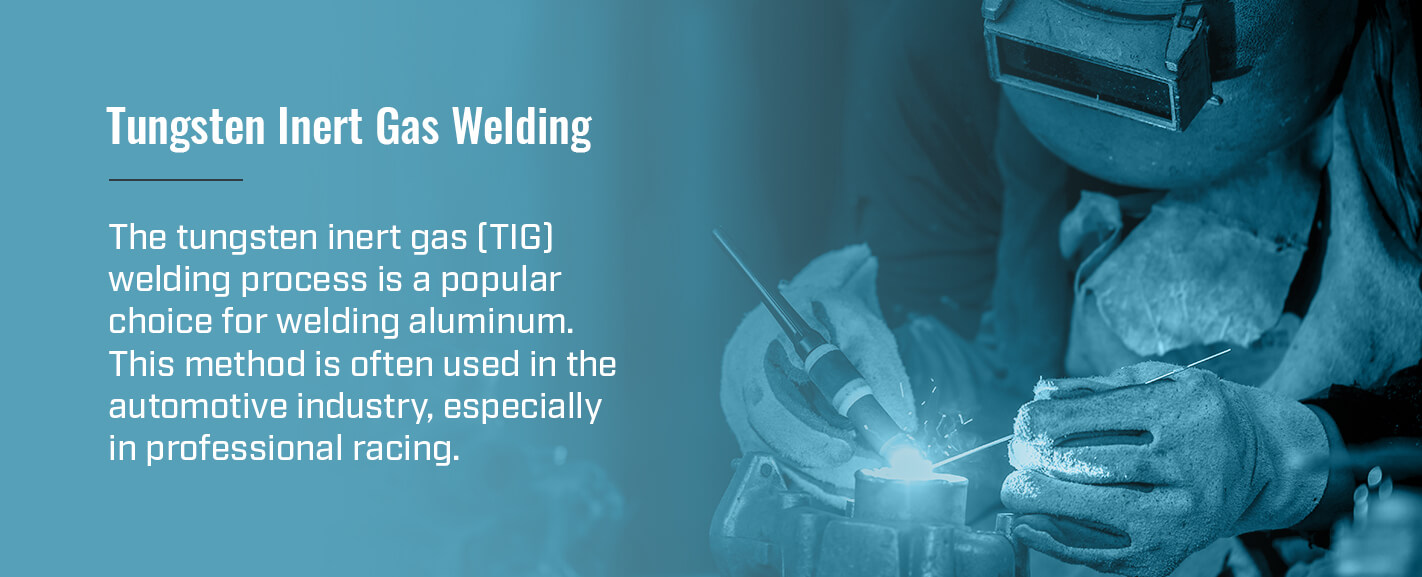
Aluminum is a great material to use for endless projects. From bicycle frames to spacecraft parts, it can be nearly anything you need it to be. But how do you weld it so that it can get there?
Welding aluminum comes with a unique set of challenges you do not experience when welding other metals like sheet metal or stainless steel. However, there are many methods you can use to get your project done, and if you follow the appropriate steps, you will be able to weld aluminum cleanly and easily.
Aluminum is a widely-used and much-need material for all kinds of projects. The metal provides a variety of benefits, such as its versatility, structural strength and resistance to corrosion. It has a low density, high strength and a low heat point, which makes welding it tricky.
The property of aluminum that makes it especially difficult to weld is that when it is exposed to natural, atmospheric air, it forms a thin layer of aluminum oxide. This is what gives it its silver color, but it also makes it corrosion-resistant to oxygen, water and many chemicals. This layer of protection makes it impossible to connect the arc and the weld pool.
To weld aluminum, you must first crack the oxide layer, meaning you must reach an incredibly high temperature to get through the first layer while also trying not to burn through the aluminum itself.
You have many choices in which method you use to weld aluminum. The best one ultimately depends on your goals, the materials you have available and your budget. Whatever those are for you, there is an aluminum welding method to fit your needs.

The tungsten inert gas (TIG) welding process is a popular choice for welding aluminum. This method is often used in the automotive industry, especially in professional racing.
To make TIG welding for aluminum successful, you must have equipment that puts out a constant, alternating current using a shielding gas of 100% argon. You will feed your filler material into the pool as you go.
During this process, the oxidized layer is burned off as it welds, which keeps your space clear. The aluminum also does not get contaminated when using the TIG process.
A pure tungsten rod is the best option when using the TIG process on aluminum. Be sure to follow proper techniques, such as keeping your aluminum piece clean, preheating it, using a heat sink and keeping the rod free of contaminants.
While metal inert gas (MIG) welding is just as common as TIG welding, it has some unique differences. MIG welding has higher deposition rates and faster traveling speeds, which changes the quality of the finished product.
It is difficult to feed the wire with this method, but using a spool gun or push-pull gun can make it easier. It is best to avoid pulling as much as possible and push at about a 15-degree angle.
The filler rod and base material must be free of moisture, have shielding gas coverage and be clean. The appearance of the weld will be cleaner when it is finished if you use multiple pass straight beads. You should also use a heat sink to allow you to weld slower.
Stick welding is a simple and inexpensive way to weld aluminum in a number of contexts. It is often used for smaller projects in shops or when welding as a hobby. Stick welding welds aluminum together smoothly when done with a powerful, direct current welder and an aluminum-coated electrode.
Resistance welding is the use of pressure to join metals together. It is a cost-effective method, as you don’t need other materials. With aluminum, welders most often use spot welding alongside this method, which fixes various areas of damage or imperfection. This method can be used in the aerospace and industrial industries, among others.
The aluminum welding process may be tricky, but following the appropriate steps will allow you to use aluminum to its full potential in your project.
When welding aluminum, the first step is to make sure the piece you are working with is cleaned off. Remove any grease, oil or other dirt with a microfiber cloth soaked in a solvent such as paint thinner, butanol or acetone.
After you clean the piece, it is time to remove the oxide layer that is protecting the aluminum. There are several ways you can go about doing this:
Whatever method you use may need to be done several times since aluminum oxidizes after just a few minutes.
As we mentioned earlier, there are several methods for aluminum welding. Choose the one that is best for your end goal and current conditions.
When welding aluminum, much of your technique will depend on the method you chose. Still, you should use the push technique across the board, through which you push the welding gun away from the weld puddle.
Your amperage and voltage setting should be higher, as aluminum benefits from higher weld travel speeds. You should also make sure your welding wire has a similar melting point to that of the aluminum.
At PBZ Manufacturing, we strive to create a manufacturing process that reduces your timeline and costs. We are your one-stop shop for manufacturing, engineering, finishing, shipping and assembling solutions. We will work with you from start to finish to ensure your project is seen to completion.
Contact us today to find out more about how we can fill your aluminum welding needs. If you’re ready, request a quote, and we will get back to you within 4 business hours.